-
Wednesday, 10 November 2021 – 9pm / Second session: Screening and closing concert with The Silent Entertainers Band. Thursday, 20 and Saturday, 22 January 2022 Filmoteca Española, Cine Doré
Session 1. Pioneers I
TicketsOscar Micheaux. The Darktown Revue
USA, 1931, b/w, original version in English with Spanish subtitles, DA and DCP, 18’Oscar Micheaux. Within Our Gates
Estados Unidos, 1920, b/n, muda, DCP, 79’. Versión restauradaThis session retrieves the oldest conserved feature-length film made by an African-American film-maker: Within Our Gates, by Oscar Micheaux (1884–1951). The picture was restored from a unique 35mm version found in Filmoteca Española, an incredible, barely believable discovery in the film world which also occasioned the idea of producing this series. Thus, the programme opens and closes with the two versions of Within Our Gates. Micheaux’s father was born into slavery in Kentucky, and the family later moved north, to Illinois, where Micheaux worked different trades — on a shoeshine stand, in a barbershop, as a porter on the railroads — before moving into film production and directing and subsequently becoming a cornerstone of Black film. Within Our Gates was made in response to the premiere of The Birth of a Nation, D.
W. Griffith’s highly popular and blatantly racist film. Micheaux sought to break away from the racial stereotypes that dominated American culture at the dawn of the twentieth century and which he experienced first-hand through his own family and the scars of slavery they bore. Within Our Gates tells the story of a young Black woman who fights to avoid the closure of a poverty-stricken school for children. The session is opened with The Darktown Revue, a short musical in which Micheaux satirises some of the African-American community’s most deeply rooted customs.
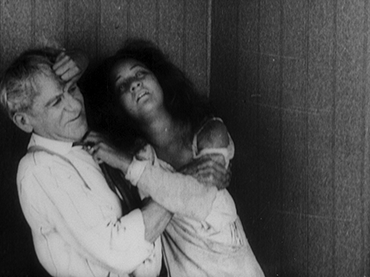
-
Thursday, 11 November 2021 – 5pm / Second session: Wednesday, 29 December 2021 – 6pm Filmoteca Española, Cine Doré / Second session: Museo Reina Sofía, Sabatini Building, Auditorium
Session 2. Pioneers II
TicketsSolomon Sir Jones. Rev. S. S. Jones Home Movies
USA, 1924–1928, b/w, silent, DCP and DA, 18’Zora Neale Hurston. Zora Neale Hurston Fieldwork Footage
USA, 1928, b/w, silent, DCP and DA, 2’The Works Progress Administration. We Work Again
USA, 1937, b/w, original version with Spanish subtitles, DCP and DA, 15’Zora Neale Hurston. Commandment Keeper Church, Beaufort South Carolina, May 1940
USA, 1940, b/w, silent, DCP and DA. 15’―And a live musical accompaniment with Jordi Ballarín and Harold Rey in the second session
This programme sets out four works that document the life of the African-American community between the Great Depression and the USA’s full engagement in the Second World War. On one side, the home movies of S. S. Jones and the documentary Commandment Keeper Church, Beaufort South Carolina, May 1940 show the community’s spaces, from the importance of religious circles to schools and businesses; and on the other, the working reality for African-American citizens faced with the idealised vision of We Work Again, propaganda created by the Roosevelt Administration. The session also represents a unique opportunity to discover the work of film-maker, writer and anthropologist Zora Neale Hurston, a central figure in the African-American cultural and intellectual movement in the first half of the twentieth century.
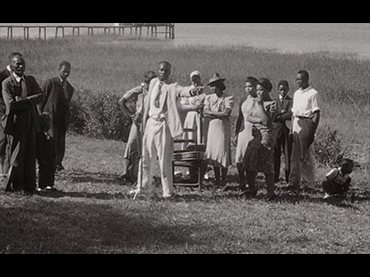
-
Friday, 12 November, 2021 – 6pm / Second session: Saturday, 18 December, 2021 - check Filmoteca Española’s programme Museo Reina Sofía, Sabatini Building, Auditorium / Second session: Filmoteca Española, Cine Doré
Session 3. Kara Walker
TicketsKara Walker. 8 Possible Beginnings or The Creation of African-America, a Moving Picture
USA, 2005, b/w, silent with intertitles, DCP and DA, 16’Kara Walker. Six Miles from Springfield on the Franklin Road
USA, 2009, colour, silent with intertitles, DCP and DA, 13’Kara Walker. Lucy of Pulaski
EUSA, 2009, colour, silent with intertitles, DCP and DA, 12’Kara Walker is a distinguished contemporary artist whose work explores the confluence of race, gender, sexuality and violence during the period of African-American slavery. In her practice, she uses modest and elemental materials that allude to late nineteenth-century and early twentieth-century popular culture, employing drawing, black silhouettes, cut-paper and shadow theatre to evoke the way of life and customs in the age of film pioneers, with whom she engages in dialogue in this series. This session screens the artist’s short films, which reference the animations of Lotte Reiniger from the 1930s while addressing, on this occasion, physical and sexual exploitation in the cotton plantations.
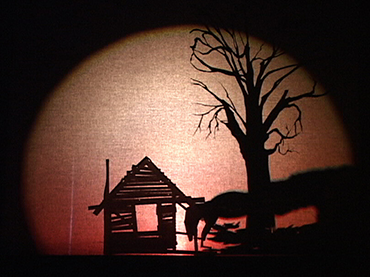
-
Saturday, 13 November, 2021 – 9pm / Second session: Friday, 17 December 2021 – 6pm Filmoteca Española, Cine Doré / Second session: Museo Reina Sofía, Sabatini Building, Auditorium
Session 4. Melvin Van Peebles
TicketsMelvin Van Peebles. Sweet Sweetback’s Baadasssss Song
USA, 1971, colour, original version in English with Spanish subtitles, DCP and DA, 97’The disappearance during the 1940s of so-called race films, pictures made exclusively for Black audiences and focused upon at the start of this film season, left the African-American community orphaned, cinematically speaking, in the decades that followed. The only possibilities of on-screen references were reduced to timid Hollywood ripples made in relation to the civil rights struggles across the 1960s, largely featuring Sidney Poitier as the lead, until Melvin Van Peebles entered the fray. Through the story of a Black prostitute that saves a member of the Black Panthers from the brutality of two police officers, Van Peebles fired the starting signal of the explosion of Blaxploitation films that flooded into the film theatres of American cities in the early 1970s, underscoring a whole potential audience being totally disregarded and marginalised. Furthermore, it denoted the first openly revolutionary African American film, proudly reflected on its release poster: “Rated X by an All-White Jury”.
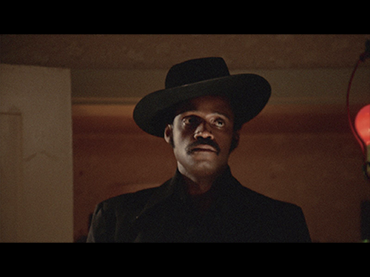
-
Sunday, 14 November 2021 – 5pm / Second session: Wednesday, 15 December 2021 – 6pm Filmoteca Española, Cine Doré / Second session: Museo Reina Sofía, Sabatini Building, Auditorium
Session 5. L.A. Rebellion I. Don Amis and Charles Burnett
TicketsDon Amis. Ujamii Uhuru Schule / Community Freedom School
USA, 1974, colour, original version in English with Spanish subtitles, 9’
Courtesy of UCLA Film & Television ArchiveCharles Burnett. Killer of Sheep
USA, 1978, colour, original version in English with Spanish subtitles, 83’Charles Burnett was the most prominent member of L.A. Rebellion, the film movement also known as the Los Angeles School of Black Filmmakers, active from 1960 to 1980 and one of the keystones of committed independent Black cinema. In his early films, Burnett had a knack for combining neo-realist naturalism with lyrical elements. Killer of Sheep, his MA thesis at the University of California, Los Angeles (UCLA), is set in LA’s Watts district, the city’s most infamous ghetto as Burnett created a humanist portrait of America’s Black working class with the story of a sensitive and frustrated slaughterhouse worker whose job seriously affects his private life with his wife and two children. The session concludes with a documentary short by Don Amis — also an L.A. Rebellion member — that looks inside a community primary school based on Black Power principles: respect, righteousness and revolution.
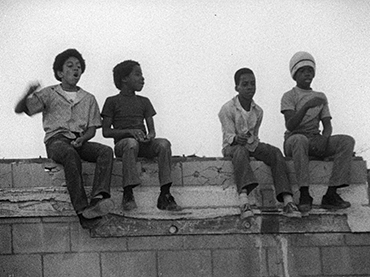
-
Monday, 15 November 2021 – 6pm / Second session: 16 December 2021 - check Filmoteca Española’s programme Museo Reina Sofía, Sabatini Building, Auditorium / Second session: Filmoteca Española, Cine Doré
Session 6. Julie Dash
TicketsJulie Dash. Daughters of the Dust
USA, 1990, colour, original version in English with Spanish subtitles, DCP and B-R, 120’. Version restored by the Cohen Film CollectionJulie Dash’s first feature became an indispensable reference point in contemporary Black film. The picture explores, at the turn of the twentieth century, the origins of a family saga within Gullah culture, a creole community with a strong presence in South Carolina and Georgia and known for fusing and maintaining the roots and customs of West Africa in the USA. Following a non-linear history of three generations of the Peazant family, the story of Daughters of the Dust starts in 1902 and spans almost the entirety of the twentieth century. The film is an oneiric celebration of popular tradition and Black femininity, in which Dash set out to evoke the past, present and future unity and identity of a community. It also features the work of artists Arthur Jafa, as director of photography (winning an award at the Sundance Film Festival), and Kerry James Marshall, on the production design.
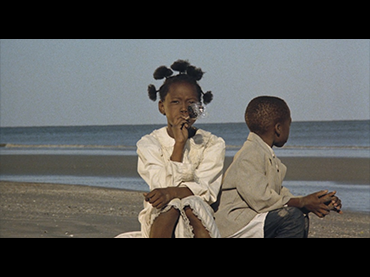
-
Tuesday, 16 November 2021 – 9pm / Second session: Monday, 27 December 2021 – 6pm Filmoteca Española, Cine Doré. / Second session: Museo Reina Sofía, Sabatini Building, Auditorium
Session 7. Pioneers III
TicketsJames y Eloyce Gist. Hell-Bound Train
USA, 1930 ca., b/w, silent, DCP and DA, 50’James y Eloyce Gist. Heaven-Bound Travellers
USA, 1935 ca., b/w, silent, DCP and DA, 15’―And a musical accompaniment with Jordi Ballarín y Harold Rey, in the second session
Husband and wife James and Eloyce Gist pursued the making of educational films, intended to be shown in schools and churches in the African-American community across much of the 1930s. Their films, shot in 16mm with limited resources, no sound and amateur actors, served as an accompaniment to the sermons James Gist preached around the country. Hence, they unfold with a definite enlightening and spiritual quality, as well as a surprising formal freedom. This session starts by screening their most ambitious work, Hell-Bound Train, a catalogue of vices from the time that the couple wished to vilify (animal cruelty, alcoholism, gambling, dance, etc), accompanied by a new score composed by Samuel Wymon, and is followed by its unfinished sequel, Heaven-Bound Travellers, discovered while restoration work was being carried out on the original film.
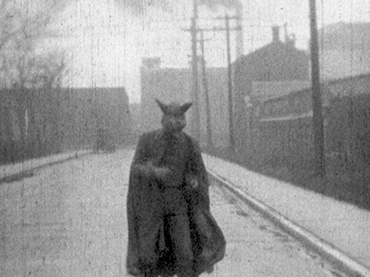
-
Wednesday, 17 November 2021 – 6pm / Second session: Friday, 3 December 2021 – check Filmoteca Española’s programme Museo Reina Sofía, Sabatini Building, Auditorium / Second session: Filmoteca Española, Cine Doré.
Session 8. Kevin Jerome Everson
TicketsKevin Jerome Everson. The Island of St. Matthews
USA, 2013, colour, original version in English with Spanish subtitles, DA, 70’
Courtesy of Picture Palace PicturesThe work of Kevin Jerome Everson, a contemporary artist and film-maker who operates in the field of experimental film, shines a light on the working class African-American community, portraying their material conditions, jobs and daily gestures. Shot in 16mm, the film starts with the loss of material history focusing on objects and photographs. The director gives a voice to the residents of Westport, a community to the west of Columbus, Mississippi, after discovering that his aunt’s old family photographs were lost in the Tombigbee River flood of 1973. A filmic poem on memory and remnants left behind by disaster.
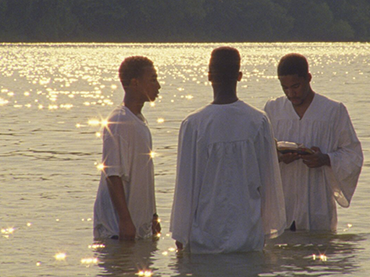
-
Thursday, 18 November 2021 – 6pm / Second session: Tuesday, 7 December 2021 - check Filmoteca Española’s programme Museo Reina Sofía, Sabatini Building, Auditorium / Second session: Filmoteca Española, Cine Doré.
Session 9. Pioneers IV
TicketsSpencer Williams. Hot Biskits
USA, 1931, b/w, silent, DCP and DA, 10’Spencer Williams. The Blood of Jesus
USA, 1941, b/w, original version in English with Spanish subtitles, DCP and DA, 56’Before becoming famous among the USA’s white community for his participation in the popular television programme Amos 'n' Andy in the 1950s — the first fictional series with an all-Black cast — Spencer Williams had started his career in cinema as an actor in small independent films intended for segregated film theatres. After notching up a number of similar roles, Williams tried his hand at directing, first with short films and finally with the medium-length film The Blood of Jesus, which brought him mass acclaim in the African-American community. The film tells the story of a dead woman who faces the temptations of the devil in the afterlife. The screening in this session is accompanied by a comedy short, also directed by Williams, which shows how independent African-American cinema from that era adapted the genres and common places of the major Hollywood studios — in this instance using the conventions of slapstick.
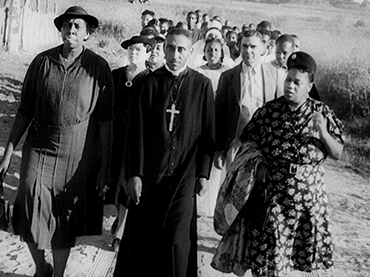
-
Friday, 19 November 2021 – 5pm / Second session: Thursday, 23 December 2021 – 6pm Filmoteca Española, Cine Doré. / Second session: Museo Reina Sofía, Sabatini Building, Auditorium
Session 10. Pioneers V
TicketsRichard Maurice. Eleven P.M.
USA, 1928, b/w, silent, DCP and DA, 60’Eleven P.M., the only surviving film directed by film-maker and trade unionist Richard Maurice, represents a genuine oddity on several fronts. For starters, it is a fictional film set and shot in real locations in Detroit, in itself unusual in American silent cinema, which was overwhelmingly saturated with shots of New York and LA. Most of all, however, the film is eye-catching within the African-American cinema from that era for its adherence to the conventions of crime cinema and its avowed experimental spirit. Through a simple melodrama about a street musician with no choice but to care for a young orphan girl, Maurice articulates a narrative brimming with fantastical and surreal elements which, combined with the documentary-style landscape of Detroit, give form to one of the most distinctive African-American films from the silent era.
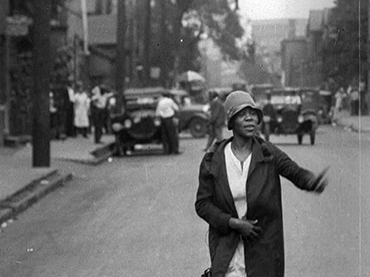
-
Saturday, 20 November 2021 – 9pm / Second session: Friday, 10 December 2021 – 6pm Filmoteca Española, Cine Doré. / Second session: Museo Reina Sofía, Sabatini Building, Auditorium
Session 11. Gordon Parks
TicketsGordon Parks. Shaft
USA, 1971, colour, original version in English with Spanish subtitles, DCP and DA, 100’“Shaft has no prejudices. He’ll kill anyone… black or white”. This was the description Ernest Tidyman used to present the protagonist of Shaft (Bantam Books, 1970), the novel with which he opened the series of stories around an African-American private detective. The character smashed stereotypes that had hitherto presented the Black man as a docile and placid figure, a figure posing no threat to the white majority. In his place came a Black response to the male and colonial fantasy personified by James Bond: Tidyman’s Shaft, a character brought to the big screen with Metro-Goldwyn-Mayer funding and who boasted about his sexual prowess and was not scared of his voice being heard, either literally or through violence. The huge commercial success of the film saw it become a template for all Blaxploitation films that came after, yet, as its director Gordon Parks never failed to point out, while his film was shot by a largely African-American crew, almost every subsequent Blaxploitation movie brazenly featured white film-makers in the industry’s lode until it was wrung dry.
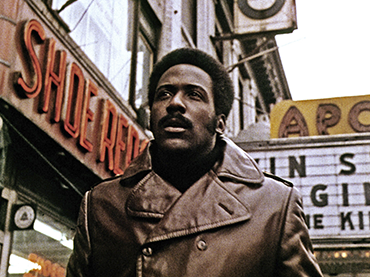
-
Sunday, 21 November 2021 – 5pm / Second session: Saturday, 28 November 2021 – 12pm Filmoteca Española, Cine Doré / Segundo pase: Museo Reina Sofía, Edificio Sabatini, Auditorio
Session 12. Michael Schultz
TicketsMichael Schultz. Car Wash
USA, 1976, colour, original version in English with Spanish subtitles, DCP and DA, 97’This film reflects the confluence of some of the most popular forms of expression the African-American community developed across the 1970s. The picture was initially written by a young Joel Schumacher as a libretto for a Broadway musical, but Universal Pictures decided it merited being turned into a feature and entrusted the directing to Michael Schultz, an African-American film-maker who had started out in theatre. Through a series of sketches, daily fragments and musical sections, the film shows the life of a group of (mostly Black) workers in a car wash in a multicultural area in central Los Angeles. Through the car wash, with its openly inclusive spirit (although not free from criticism), parades disco, soul and funk culture; some of the new figures in African-American comedy, including Richard Pryor; an openly and militantly gay man; A Muslim activist; a prostitute who uses the business as an operation hub; and even the son of a businessman who proudly wears a Mao Tse-Tung T-shirt.
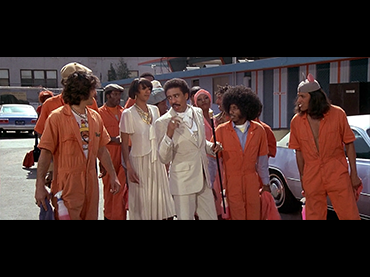
-
Monday, 22 November 2021 – 6pm / Second session: Thursday, 9 December 2021 - check Filmoteca Española’s programme Museo Reina Sofía, Sabatini Building, Auditorium / Second session: Filmoteca Española, Cine Doré
Session 13. Pioneers VI
TicketsRichard C. Kahn. The Bronze Buckaroo
USA, 1939, b/w, original version in English with Spanish subtitles. DCP and DA, 58’The figure of musician and actor Herb Jeffries (1914–2014) is interesting as much for his work as a singer as an actor in different Westerns, such as this one, made specifically for an African-American audience. Born to an Irish mother and Italian father, but with North African roots, his work with African-American and Latin American musicians (Duke Ellington and Juan Tizol, to mention a few) led him to understand the extreme discrimination that exists over skin colour. Jeffries would become known for playing a cowboy hero in Westerns produced in the USA’s segregated society at the beginning of the twentieth century. For such purposes, he darkened his skin using make-up and presented himself as openly African-American, proudly displaying roots that many of his contemporaries tried to hide to obtain work (“I’m three-eighths Negro”, he would say). In The Bronze Buckaroo, one of many low-budget Westerns, he plays a cowboy who tries to help his friend Joe deal with the threats of the wicked Buck Thorne and his intention to take the gold he has found on Joe’s land. As was customary in these films, in a running time just shy of sixty minutes it offers romance, shoot-outs, comedy and music, all designed for segregated film theatres.
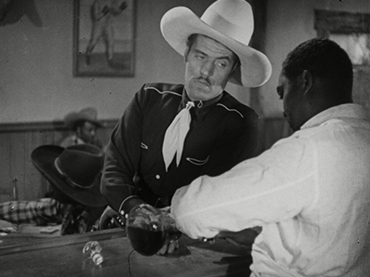
-
Tuesday, 23 November 2021 - 9pm / Second session: Sunday, 5 December 2021 – 12pm Filmoteca Española, Cine Doré / Segundo pase: Museo Reina Sofía, Sabatini Building, Auditorium
Session 14. Pioneers VII
TicketsSpencer Williams. Dirty Gertie from Harlem U.S.A.
USA, 1946, b/w, original version in English with Spanish subtitles, DCP and DA, 65’Following the success of The Blood of Jesus, Spencer Williams sealed funding from producer Alfred N. Sack to make a high-budget film with wider distribution, originally designed to move beyond the African-American community’s theatres. Adapted from the short story by William Somerset Maugham, Dirty Gertie from Harlem U.S.A. tells the story of a singer and dancer who travels to a Caribbean island to lead a show in a popular hotel. While there, she meets a soldier and a sailor, who fall in love with her, and a preacher who decries the “shamelessness” of her work. Despite its success among African-American audiences, the film was unable to attract white audiences at the time, although it has become one of the paradigmatic examples (along with Stormy Weather, 1943, and The Green Pastures, 1959) of the leap, from the 1940s onwards, independently produced films for Black audiences took towards greater (though still uncommon) stability.
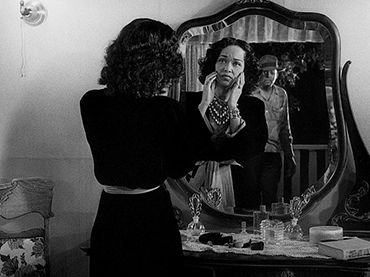
-
Wednesday, 24 November 2021 – 6pm / Second session: Saturday, 4 December 2021 - check Filmoteca Española’s programme Museo Reina Sofía, Sabatini Building, Auditorium / Second session: Filmoteca Española, Cine Doré
Session 15. Bill Gunn
TicketsBill Gunn. Ganja & Hess
USA, 1973, colour, original version in English with Spanish subtitles, DCP and DA, 113’Ganja & Hessi is, and at the same time isn’t, a Blaxploitation film. Seeking to ride on the popular wave of Blacula (1972), film-maker William Gunn saw the chance to turn what he felt was a meaty project into a formally avant-garde film which uses vampirism as an allegory of slavery. Thus, Gunn widened the potential of the narrative to make room for decades of suffering by the African-American community: the virus that infects the main character, an archaeologist, turning him into a sickly and blood-thirsty creature, is the virus of the past, a perpetually open wound that prevents a new identity from being built. Despite the success of the film at Cannes, where it won the Critics’ Choice prize, its appearance in commercial theatres was such a disaster that the producers decided to mutilate it repeatedly, premiering it under different names in the hope of recovering investment. Fortunately, the full version was recently recovered and exhibited by MoMA, cementing its reputation as a cult film.
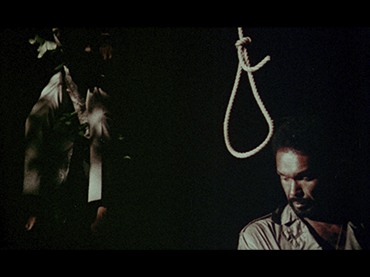
-
Thursday, 25 November 2021 – 7:30pm / Second session: Monday, 13 December 2021 – 6pm Filmoteca Española, Cine Doré. / Second session: Museo Reina Sofía, Sabatini Building, Auditorium
Session 16. Ivan Dixon
TicketsIvan Dixon. The Spook Who Sat by the Door.
USA, 1973, colour, original version in English with Spanish subtitles, DCP and DA, 102’Keen to show its eagerness for racial integration, the CIA welcomes its first African-American agent on board. Although he is a token agent with little responsibility, he takes the opportunity to study agency tactics and uses them to organise a militia and bring down the government. An adaptation of the homonymous novel by Sam Greenlee, Ivan Dixon’s film is paradigmatic of the transition that occurred in the civil rights struggle in the 1960s, moving from the pacific protest of Martin Luther King to the Black Panthers’ direct action. Thus, The Spook Who Sat by the Door, in clearly positing its anti-system stance, would become one of the biggest examples of the political potential of Blaxploitation, so much so that the FBI, directed at that time by J. Edgar Hoover, discreetly seized all copies of the film, which was only saved after its director secretly kept a copy.
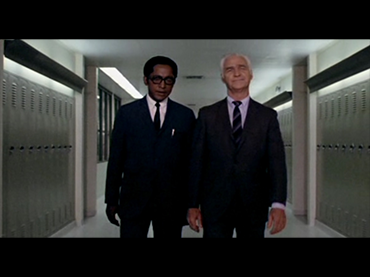
-
Saturday, 27 November 2021 – 6pm / Second session: Thursday, 23 December 2021 - check Filmoteca Española’s programme Museo Reina Sofía, Sabatini Building, Auditorium / Second session: Filmoteca Española, Cine Doré
Session 17. Larry Bullard and Carolyn Y. Johnson
TicketsLarry Bullard y Carolyn Y. Johnson. A Dream is What You Wake Up From
USA, 1978, colour, original version in English with Spanish subtitles, DCP and DA, 50’Dedicated to Afro-Cuban film-maker Sara Gómez (1942–1974), from whom it draws inspiration, and Mozambican activist Josina Machel (1945–1971), this dramatised documentary melds fiction, documentary and historical recreation in a pioneering and bold analysis of the intersection of race, gender and social class. A Dream is What You Wake Up From contrasts the daily life of different families of unequal economic status, the problems they encounter and the different subjective positions they adopt thereon.
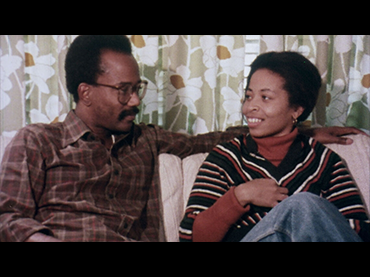
-
Saturday, 27 November 2021 – 9pm / Second session: Wednesday, 22 December 2021 – 6pm Filmoteca Española, Cine Doré. / Second session: Museo Reina Sofía, Sabatini Building, Auditorium
Session 18. Spike Lee
TicketsSpike Lee. Do the Right Thing
USA, 1989, colour, original version in English with Spanish subtitles, 110’Spike Lee, a key figure in contemporary Black film, was one of the first directors to introduce Afro-American issues and vindications to the mainstream, forging a path travelled down by subsequent film-makers such as Steve McQueen. Straddling the positions of Martin Luther King and Malcolm X, and with a cast of stars in the making (Samuel L. Jackson, Rosie Perez and John Turturro) and music by Public Enemy, the film is situated between satire and social critique. In 1989, the title Do the Right Thing called for a reaction through the story of Mookie, a pizza delivery man and witness to inequalities, tensions and racism in the daily life of one of Brooklyn’s poorest neighbourhoods.
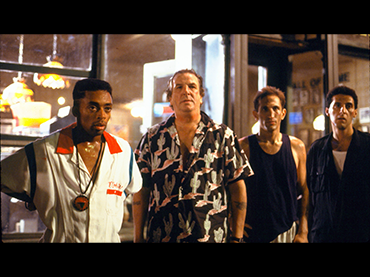
-
Sunday, 28 November 2021 – 5pm / Second session: Sunday, 19 December 2021 – 12pm Filmoteca Española, Cine Doré. / Second session: Museo Reina Sofía, Sabatini Building, Auditorium
Session 19. John Singleton
TicketsJohn Singleton. Boyz n the Hood
USA, 1991, colour, original version in English with Spanish subtitles, 111’John Singleton made history as the first African-American director to be nominated for an Oscar for this film, his directorial debut at tender age of 24. Boyz n the Hood tells the coming-of-age story of three boyhood friends in a Los Angeles ghetto shaped by poverty, gangland violence and police brutality. With a rap and hip-hop soundtrack including Compton's Most Wanted, 2 Live Crew, Tony! Toni! Toné! and rapper Ice Cube, and with actors Cuba Gooding Jr., Morris Chestnut and Laurence Fishburne in leading roles, Singleton admitted that with this film he had explored the reality facing young Black people on the streets through his own personal experience.
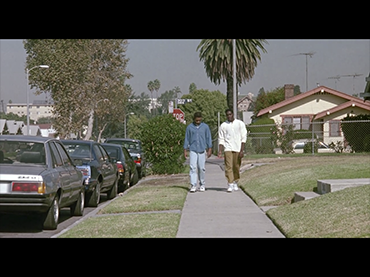
-
Monday, 29 November 2021 – 6pm / Second session: Saturday, 11 December 2021 - check Filmoteca Española’s programme Museo Reina Sofía, Sabatini Building, Auditorium / Second session: Filmoteca Española, Cine Doré
Session 20. Stephen Winter
TicketsStephen Winter. Chocolate Babies;
USA, 1996, colour, original version in English with Spanish subtitles, DCP and DA, 83’In Stephen Winter’s debut, a terrorist group of Black drag queens and militant HIV-positive transexuals confront conservative and homophobic policies on the streets of New York to draw attention to the AIDS crisis, particularly among African-American communities. A political satire which, fusing rage and campness, became one of the most powerful declarations of queer Black identity in the 1990s.
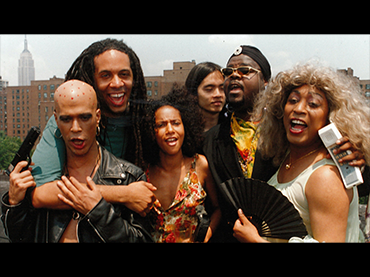
-
Tuesday, 30 November 2021 – 9pm / Second session: Wednesday, 8 December 2021 – 6pm Filmoteca Española, Cine Doré. / Second session: Museo Reina Sofía, Sabatini Building, Auditorium
Session 21. Cheryl Dunye
TicketsCheryl Dunye. She Don't Fade
USA, 1991, b/w, original version in English with Spanish subtitles, DCP and DA, 23’Cheryl Dunye. The Watermelon Woman
USA, 1996, colour, original version in English with Spanish subtitles, DCP and DA, 90’The work of film-maker Cheryl Dunye explores the limits between fiction and documentary, from her early titles to her work in major series such as Lovecraft Country (2020), operating with perpetual humour from the intersection of race, gender and sexuality. She Don’t Fade is one of the most famous “dunyementaries” (a term Dunye uses to refer to the mix of autobiography and fiction in her work) directed by and starring the film-maker, and combines the personal and the imagined through the story of a young Black lesbian woman’s sexuality. The Watermelon Woman, in reference to Melvin Van Peebles’ Watermelon Man, was a landmark in New Queer Cinema in the 1990s for facing, head on, Black lesbian identity and the stereotypical image of racialised women in Hollywood, focusing on an employee in a video store, played by Dunye, who is captivated by an unknown African-American actress from the 1930s known as the “watermelon woman”.

-
Thursday, 2 December 2021 – 6pm / Second session: Saturday, 26 December 2021 - check Filmoteca Española’s programme Museo Reina Sofía, Sabatini Building, Auditorium / Second session: Filmoteca Española, Cine Doré
Session 22. L.A. Rebellion II. Haile Gerima
TicketsHaile Gerima. Hour Glass
USA, 1971, b/w and colour, original version in English with Spanish subtitles, DCP and DA, 13’
Courtesy of UCLA Film & Television ArchiveHaile Gerima. Bush Mama
USA, 1979, b/w, original version in English with Spanish subtitles, 16mm, 97’
Courtesy of UCLA Film & Television ArchiveEthiopian-American film-maker Haile Gerima made these two films on Black awareness within the framework of the Los Angeles School of Black Filmmakers, L.A. Rebellion. Hour Glass, his first work, is a political montage, a black-and-white and colour collage, with music by the band The Last Poets and leader of the Black Panthers, singer and writer Elaine Brown. In the film, a Black basketball player encounters the work of Frantz Fanon, Martin Luther King and Angela Y. Davis as Gerima connects civil rights movements with third-world struggles. Made in 1975 as an MA thesis at the University of California, Los Angeles (UCLA), and with photography by Roderick Young and Charles Burnett, Bush Mama would not be screened until 1979. Starting with documentary images of the police stopping and searching the crew, Gerima moves from cinéma verité to agitprop to narrate the progressive politicisation of a mother coming up against the dehumanised system of social assistance.

-
Friday, 3 December 2021 – 6pm / Second session: Tuesday 28 December 2021 - check Filmoteca Española’s programme Museo Reina Sofía, Sabatini Building, Auditorium / Second session: Filmoteca Española, Cine Doré
Session 23. L.A. Rebellion III. Larry Clark
TicketsLarry Clark. Passing Through
USA, 1977, colour, original version in English with Spanish subtitles, DCP and DA, 105’
Courtesy of UCLA Film & Television ArchivePassing Through, the showpiece of L.A. Rebellion, the school that brought together African-American film-makers from the University of California, Los Angeles (UCLA) in the 1970s, was Larry Clark’s MA thesis. It is also one of the few fictional features on the world of jazz, featuring music by John Coltrane, Charlie Parker and Sun Ra, made by a Black film-maker. Via the story of a saxophonist, recently released from prison, who faces white music-industry executives, Clark counters exploitation and commercialisation with the spirited and raging subjectivity of jazz, looking for a narrative and formal alternative to Hollywood and in the process finding an expressive space by emulating the expressiveness of jazz in film.

-
Monday, 6 December 2021 – 6pm / Second session: Friday, 10 December 2021 - check Filmoteca Española’s programme Museo Reina Sofía, Sabatini Building, Auditorium / Second session: Filmoteca Española, Cine Doré
Session 24. Cauleen Smith
TicketsCauleen Smith. The Changing Same
USA, 2001, colour and b/w, original version in English with Spanish subtitles, DA, 10’Cauleen Smith. The Way Out Is the Way Two: Fourteen Short Films About Chicago and Sun Ra
USA, 1998, colour, original version in English with Spanish subtitles, DA, 86’A double session with African-American artist and film-maker Cauleen Smith. The short film is a riff on Afro-Futurism, a genre developed from social critique and parody which argues that the real extra-terrestrial is Black and that their freedom will come about in outer space, far from the Earth. Smith takes this Afro-Futurist outlandishness to a more intimate and existential space. In The Changing Same we find two Black aliens stranded on an empty Planet Earth and trying to find how to relate to one another. Drylongso, or “ordinary” in Afro-American vernacular, is an independent cult film and Smith’s debut feature — it premiered at the Sundance Film Festival and won the Independent Spirit Awards, the indie film awards par excellence. In this particular story, Pica, a young African-American art student, obsessively documents with her Polaroid camera the Black men in her environment in connection to the murders taking place in her neighbourhood and with the conviction that very soon they will be an extinct species, with these snapshots the only evidence of their existence.
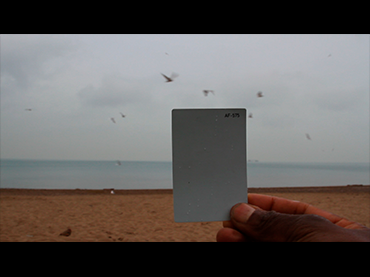
-
Tuesday, 21 December 2021 - check Filmoteca Española’s programme / Second session: Friday, 14 January 2022 - 6 pm Filmoteca Española, Cine Doré / Second session: Museo Reina Sofía, Sabatini Building, Auditorium
Session 25. Feminist Short Films
TicketsAlile Sharon Larkin. Your Children Come Back to You
USA, 1979, b/w, original version in English with Spanish subtitles, 16mm, 27’
Courtesy of UCLA Film & Television ArchiveFronza Woods. Killing Time
USA, 1979, colour, original version in English with Spanish subtitles, DA, 9’Fronza Woods. Fannie's Film
USA, 1982, b/w, original version in English with Spanish subtitles, DA, 15’Julie Dash. Illusions
USA, 1982, b/w, original version in English with Spanish subtitles, 16mm, 34’
Courtesy of UCLA Film & Television ArchiveAt the end of the 1970s and the beginning of the decade that followed, a series of Black women film-makers emerged who focused on putting African-American women centre stage and giving them a voice, with their films possessing a markedly naturalistic quality. In Your Children Come Back To You, L.A. Rebellion member Alile Sharon Larkin adopted the point of view of a girl divided between the convictions of her mother, proud of her roots but with minimal financial resources, and her aunt, alienated by white values. Fronza Woods, for her part, made different portraits of invisible women: in Killing Time she spotlights the dilemma of a suicidal woman who can’t find the right outfit, while Fannie��’s Film narrates the routine of a 65-year-old cleaning woman. Finally, Julie Dash portrays the life of two women in the film industry in the 1940s who need to appear white to work.

-
Wednesday, 1 December 2021 - check Filmoteca Española’s programme / Second session: Saturday, 11 December 2021 - 6 pm Filmoteca Española, Cine Doré / Second session; Museo Reina Sofía, Sabatini Building, Auditorium
Session 26. Arthur Jafa
TicketsArthur Jafa. Ms Hillsonga
USA, 2017, colour and b/w, sound, DA, 4’Arthur Jafa. Dreams are Colder than Death
USA, 2014, colour, original version in English with Spanish subtitles, DA, 52’
Courtesy of the artist and Gladstone GalleryArthur Jafa is a unique figure and to some degree casts light upon the general condition of African-American film-makers and artists. Regarded as one of the most relevant contemporary artists, such international recognition has only come about in recent years after decades working as a director of photography on films by the likes of Julie Dash (Daughters of the Dust, 1990) and Spike Lee (Crooklyn, 1994). Jafa defends a distinct identity of Black film across its history, based at once on the ethical role of images and the uniqueness of its very form. Moreover, he coined the concept Black Visual Intonation (BVI), referring to a montage based on the pulsating rhythm of Black music. Ms Hillsonga is a four-minute torrent of BVI with images of racial violence and Black lives to the sound of Jeff Mills’s techno. Dreams are Colder than Death is a feature-length documentary which compiles, fifty years on from Martin Luther King’s famous speech “I Have a Dream”, a series of voices — including the voices of Kara Walker and Charles Burnett — which ask what it means to be Black in the USA today. Jafa’s output stands among the most powerful visual work against the Trump Administration.

-
Tuesday, 14 December, 2021 - check Filmoteca Española’s programme / Second session: Saturday, 15 January 2022 - 6 pm Filmoteca Española, Cine Doré / Second session: Museo Reina Sofía, Sabatini Building, Auditorium
Session 27. Kathleen Collins
TicketsKathleen Collins. Losing Ground
USA, 1982, colour, original version in English with Spanish subtitles, DCP and DA, 83’Writer and film-maker Kathleen Collins stood out for the way in which she addressed, via stories, theatre pieces, screenplays and films, marital relationships characterised by self-reflective women who move from a state of subjugation to empowerment. Thus, Losing Ground was a pioneering feature in bringing African-American feminist awareness to films, albeit without a commercial premiere. The film is a semi-autobiographical dramatic comedy that revolves around the marital crisis of a philosophy lecturer and her painter husband. An amorous tangle crossed by issues of race and gender, condemned to obscurity by distributors and re-discovered years later as a landmark of independent film.

-
Sunday, 12 December 2021 - 12 pm / Second session: Wednesday 22 December, 2021 - check Filmoteca Española’s programme Museo Reina Sofía, Sabatini Building, Auditorium / Second session: Filmoteca Española, Cine Doré.
Session 28. L.A. Rebellion IV. Billy Woodberry
TicketsBilly Woodberry. Bless Their Little Hearts
USA, 1984, b/w, original version in English with Spanish subtitles, DCP and DA, 80’
Courtesy of UCLA Film & Television ArchiveBilly Woodberry filmed Bless Their Little Hearts on the streets of LA ghetto Watts, just as UCLA and L.A. Rebellion comrade Charles Burnett had done. Bless Their Little Hearts is a story of unemployment, chronic poverty and institutionalised racism and was written and shot by Burnett. The naturalist aesthetic, indebted to neo-realism, the gloomy black and white, and a crackly jazz soundtrack make this film a heartrending — but never sentimental — drama, in which a terrible reality finds daily moments of silent grace.

-
Sunday, 19 December 2021 - check Filmoteca Española’s programme / Second session: Monday, 20 December 2021 - 6 pm Filmoteca Española, Cine Doré. / Second session: Museo Reina Sofía, Sabatini Building, Auditorium
Session 29. Gordon Parks
TicketsGordon Parks. The Learning Tree
USA, 1969, colour, original version in English with Spanish subtitles, DCP and DA, 107’The penultimate session in the series pays homage to The Learning Tree, the first film directed by an African-American film-maker for a major Hollywood studio, Warner Bros. It also pays tribute to the pre-eminent figure of Gordon Parks, one of the twentieth century’s most important photographers and also a musician, writer and film-maker committed to race relations, poverty, civil rights and urban life. The Learning Tree takes the same-titled autobiographical novel by Gordon Park to the silver screen in a portrait of a young Black man and his coming-of-age story in a small Kansas town in the 1920s. Parks directed this film under the constantly watchful eye of the producer. When the Library of Congress created, in 1989, its National Film Registry — a selection of films considered key within American film heritage to increase awareness for its preservation — The Learning Tree was one of the first 25 titles to feature.

-
Thursday, 20 January 2022 - check Filmoteca Española’s programme / Second session: Saturday, 22 January, 2022 - 6 pm Filmoteca Española, Cine Doré. / Second session: Museo Reina Sofía, Sabatini Building, Auditorium
Session 30. Screening and Closing Concert with The Silent Entertainers Band
TicketsOscar Micheaux. Within Our Gates
USA, 1920, b/w, silent, 35mm, 79’. Unrestored version in Filmoteca EspañolaOscar Micheaux. Within Our Gates
USA, 1920, b/w, silent, AD, 80’. Restored version in Museo Reina Sofia—And a musical accompaniment with The Silent Entertainers Band
The series comes full circle, ending as it began, with the first ever film directed by an African-American film-maker: Within Our Gates, by Oscar Micheaux. In this closing session, the two versions of the film are screened. In Cine Doré, the original 35mm version, which enabled its restoration, retrieval and dissemination. Within Our Gates entered the collections of Filmoteca Española in 1961, hailing from an acquisition by Laboratorios Arroyo. However, it wouldn’t be catalogued or attributed until 1992, and restoration got under way in 2003 from the only original copy preserved in the world. In Museo Reina Sofia this restored version is screened. Screening is accompanied, in both sessions, by live music with a score made expressly for the occasion by the quartet The Silent Entertainers Band.

BLACK FILMS MATTER (1920-2020)
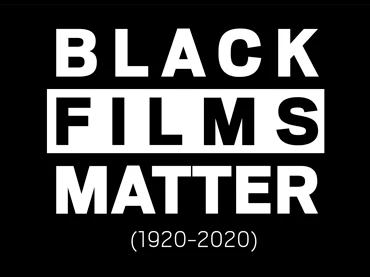
Held on 10 Nov 2021
Black film matters. From the oldest conserved feature-length film directed by a black film-maker, Oscar Micheaux’s Within Our Gates (1920), to Arthur Jafa’s frenetic contemporary pieces in Trump-era America, this series sets in motion a journey through independent Black film from the US, doing so in an anthological-style retrospective organised by the Museo Reina Sofía and Filmoteca Española and gathering, for the first time, a century of films directed solely by African-American film-makers.
With this imperative, the series sets out to avoid the racial stereotypes of representation that have previously characterised the work of legendary Black actors and actresses. Across thirty sessions inside a two-month programme, these films call for and narrate another great history of the medium in the USA, placing the subordinate and resistant gaze of Black minorities front and centre. This history arises from one of the most urgent and necessary desires spanning the series: the struggle for life. Just as film-maker Arthur Jafa and philosopher Fred Moten remind us, Black film can be made with the same power, beauty and alienation as black music, and on the same common ground: not abiding by the rules, taking them apart and recombining them with the same impromptu logic that flavours blues, jazz, hip-hop and house, and the images and sounds in Black film.
Therefore, this particular journey cannot be traced chronologically or linearly, but rather as a type of spiral, jumping back and forth in a syncopated composition that governs dialogues between screenings in both venues. The programme, removed from canon and emblem, puts forward a narrative based on cinematic manifestations which do not externally or observationally spotlight the Black population, but are made by this same community, portraying their way of life and unique experience. BLACK FILMS MATTER (1920-2020) is more a series of unique films with interconnected reverberations and confluences than a theoretical programme, comprising different sessions which, as units of meaning, give an underlying form to this filmic beat. Consequently, it constructs an archaeology of film pioneers, including those pictures made by the first African-American directors in history, Oscar Michaux and Zora Neale Hurston, the so-called race films from the early twentieth century and an alternative industry developed in the silent film era and still unknown due to its massive potential to destabilise. In this sense, Oscar Micheaux’s Within Our Gates is an anti-racist response to the aberrant xenophobic monumentality of D.W. Griffith’s The Birth of a Nation (1915), a landmark of orthodox film history.
Following on from this period we connect with the emergence of Black awareness and the civil rights movements in the 1960s and 1970s, characterised by the insurgence of the Black Power movement and LA Rebellion, collectives in which film greats Charles Burnett, Melvin van Peebles and Billy Woodberry are prominent. Equally, the politics of difference unites feminism, Blackness and queer identities in the work of Julie Dash, Cheryl Dunye and Cauleen Smith.
The film season also makes room for street and popular cinema, which looks at neighbourhood as territory and battlefield, for instance in the films of Spike Lee, Gordon Parks, Michael Schulz and John Singleton that are made for a new, specifically black mass audience, a “counter audience” which transforms North American blockbuster cinema.
Sessions by contemporary artists, featuring Kevin Jerome Everson, Arthur Jafa and Kara Walker, work as counterpoints — outside chronology — which return to foundational times in Black film, such as the origins of the pioneers or riots in the 1960s and 1970s.
The programme looks to reintegrate these historical genealogies in a contemporary Black awareness that incorporates the past and which, at the same time, is capable today of demonstrating unity with one of the biggest social movements and hopes of our times, Black Lives Matter, and the film-making which inhabits these lives.
Curators
Chema González (Museo Reina Sofía); Natalia Marín and Carlos Reviriego (Filmoteca Española)
Más actividades

Difficulty. Forms and Political Effects of Deviation in Writing and Contemporary Art
23 February – 14 December 2026 – Check programme
Difficulty. Forms and Political Effects of Deviation in Writing and Contemporary Art is a study group aligned towards thinking about how certain contemporary artistic and cultural practices resist the referentiality that dominates the logics of production and the consumption of present-day art. At the centre of this proposal are the concepts of difficulty and deviation, under which it brings together any procedure capable of preventing artistic forms from being absorbed by a meaning that appears previous to and independent from its expression. By ensuring the perceptibility of their languages, difficulty invites us to think of meaning as the effect of a signifying tension; that is, as a productive and creative activity which, from the materiality of art objects, frees aesthetic experience from the representational mandate and those who participate in it from the passiveness associated with tasks of mimesis and decoding.
The economy of the referential norm translates the social logic of capitalism, where insidious forms of capturing subjectivity and meaning operate. In the early 1980s, and adopting a Marxist framework, poet Ron Silliman highlighted how this logic entailed separating language from any mark, gesture, script, form or syntax that might link it to the conditions of its production, rendering it fetichised (as if without a subject) and alienating its users in a use for which they are not responsible. This double dispossession encodes the political strategy of referential objectivity: with no subject and no trace of its own consistency, language is merely an object, that reality in which it disappears.
The political uses of referentiality, more sophisticated today than ever before, sustain the neoliberal-extractivist phase of capitalism that crosses through present-day societies politically, economically and aesthetically. Against them, fugitive artistic practices emerge which, drawing from Black and Queer studies and other subaltern critical positions, reject the objective limits of what exists, invent forms to name what lies outside what has already been named, and return to subjects the capacity to participate in processes of emission and interpretation.
Read from the standpoint of artistic work, the objective capture of referentiality may be called transparency. Viewed from a social contract that reproduces inequality in fixed identity positions, transparent in this objectivity are, precisely, the discourses that maintain the status quo of domination. Opposite the inferno of these discourses, this group aims to collectively explore, through deviant or fugitive works, the paradise of language that Monique Wittig encountered in the estranged practices of literature. For the political potency of difficulty — that is, its contribution to the utopia of a free language among equals — depends on making visible, first, its own deviations; from there, the norm that those deviations transgress; and finally, the narrowness of a norm which in no way exhausts the possibilities ofsaying, signifying, referring and producing a world.
From this denouncement of referential alienation, fetishisation and capture, Difficulty. Forms and Political Effects of Deviation in Writing and Contemporary Art turns its attention to the strategies of resistance deployed by contemporary artists and poets. Its interest is directed towards proposals as evidently difficult or evasive as those of Gertrude Stein, Lyn Hejinian, Theresa Hak Kyung Cha, Kameelah Janan Rasheed, Kathy Acker, María Salgado and Ricardo Carreira, and as seemingly simple as those of Fernanda Laguna, Felix Gonzalez Torres and Cecilia Vicuña, among other examples that can be added according to the desires and dynamics of the group.
The ten study group sessions, held between February and December, combine theoretical seminars, work with artworks from the Museo Reina Sofía’s Collections and exhibitions, reading workshops and public programs. All these formats serve as spaces of encounter to think commonly about certain problems of poetics — that is, certain political questions — of contemporary writing and art.
Difficulty. Forms and Political Effects of Deviation in Writing and Contemporary Art inaugurates the research line Goodbye, Representation, through which the Museo Reina Sofía’s Studies Directorship seeks to explore the emergence of contemporary artistic and cultural practices which move away from representation as a dominant aesthetic-political strategy and redirect their attention toward artistic languages that question the tendency to point, name and fix, advocating instead for fugitive aesthetics. Over its three-year duration, this research line materializes in study groups, seminars, screenings and other forms of public programming.

CLINIC 2628. A Community of Writing and Research in the Arts
February – October 2026
Clinic 2628 is a project which supports and brings together writings which stem from the intention to offer a space and sustainable time for research work in art and culture. Framed within an academic context which is increasingly less receptive to the forms in which thinking happens and is expressed, the aim is to rescue the academic from its neoliberal trappings and thus recover the alliance between precision and intuition, work and desire. A further goal is to return writing to a commons which makes this possible through the monitoring of processes and the collectivisation of ideas, stances, references and strategies.
The endeavour, rooted in a collaboration between the Museo Reina Sofía’s Studies Directorship and the Artea research group, via the i+D Experimenta project, is shaped by three annual editions conceived as spaces of experimentation, discussion and a demonstration of writings critical of what is put forward by today’s academia.
What forces, forms and processes are at play when writing about art and aesthetics? In academia, in museums and in other cultural institutions, the practice of writing is traversed by productivist logics which jeopardise rhythms of research and experimentation. The imposition of both scientism inherent in the structure of “the paper” and the quantifying of results which demand a criterion of quality and visibility sterilise and smoothen, from the outset, the coarseness that is particular to writing understood from the concrete part of language: phonic, graphic, syntactic and grammatical resistance connecting the language user to the community the language unites and activates. They also sterilise the roughness enmeshed in the same desire to write, the intuitive, clear and confusing pathways that once again connect the writer to those reading and writing, participating in a common good that is at once discovered and produced.
The progressive commercialisation of knowledge propelled by cognitive capitalism moves further away from the research and production of knowledge in artworks and artistic languages and practices. The work of curators and archive, criticism, performances and essays formerly saw a horizon of formal and emotional possibilities, of imagination that was much broader when not developed in circumstances of competition, indexing and impact. Today, would it be possible to regain, critically not nostalgically, these ways; namely, recovering by forms, and by written forms, the proximity between art thinking and its objects? How to write in another way, to another rhythm, with no more demands than those with which an artwork moves towards different ways of seeing, reading and being in the world?
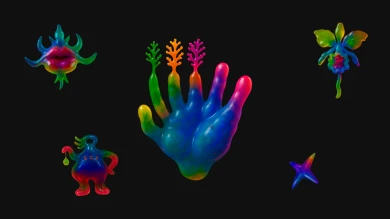
Cultural Work
Thursday, 12 February 2026 – 5:30pm
This series is organised by equipoMotor, a group of teenagers, young people and older people who have participated in the Museo Reina Sofía’s previous community education projects, and is structured around four themed blocks that pivot on the monstrous.
Session number two looks to approach film as a place from which cultural work is made visible and processes of production engage in dialogue with artistic creation. From this premise, the session focuses on exploring how audiovisual content is produced, assembled and distributed, from the hands that handle the images to the bodies that participate in its circulation. The aim is to reflect on the invisible effort, precarity and forms of collaboration that uphold cultural life, that transform the filmic experience into an act that recognises and cares for common work.
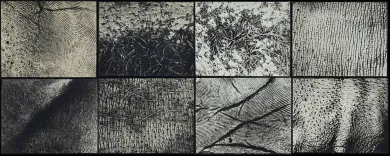
The (legal) person and the legal form. Chapter II
8, 12, 15 January, 2026 – 16:00 to 19:00
As part of the Studies Constellation, the Study Directoship’s annual fellowship, art historian and theorist Sven Lütticken leads the seminar The (Legal) Person and the Legal Form: Theoretical, Artistic, and Activist Commitments to foster dialogue and deepen the hypotheses and questions driving his research project.
This project, titled Unacting Personhood, Deforming Legal Abstraction, explores the dominance of real abstractions—such as exchange value and legal form—over our processes of subjectivation, and asks how artistic practices can open up alternative ways of representing or performing the subject and their legal condition in the contemporary world.
The seminar consists of eight sessions, divided into three chapters throughout the academic year. While conceived as non-public spaces for discussion and collective work, these sessions complement, nourish, and amplify the public program of the Studies Constellation.
In this second chapter of the seminar, the inquiry into the aesthetics and politics of legal form continues with three sessions that pick up the discussions held in Chapter I but propose new lines of flight. The first session focuses on international law via the writings of the British author China Miéville, which allows us to reconsider the notion of the legal form –following Evgeny Pashukanis— and, through it, a variety of (people’s) tribunals. While the crucial concept of the legal person –as the right-holder central to the form of law— was debated in Chapter I, the second session focuses on attempts to extend personhood not (just) to corporations, but rather to nonhuman animals or ecosystems. Finally, the third session poses the question: how can groups and networks use officially recognized organizational forms (such as the foundation or the cooperative) and/or use a collective persona (without necessarily a legal “infrastructure” to match) to act and represent themselves?

TEJA 2026. Open Call for Emergency Art Residencies
Proposal submission until 12 January, 2026
TEJA / Red de espacios culturales en apoyo a situaciones de emergencia [Network of Cultural Spaces in Support of Emergency Situations] has the mission to promote transnational cooperation by offering temporary art residencies to artists and cultural practitioners who find themselves in complex socio-political situations in their countries of origin. During their stay in Spain, residents receive accommodation, legal and psychological counseling, and access to a network of organizations and professionals with whom they can share, develop, and continue with their creative projects. The goal is to provide a safe and stimulating environment where artists can continue their work despite adverse circumstances and generate dialogue spaces that ensure freedom of expression through joint activities both in Spain and with international collaborators.
During 2026, TEJA hosts three new residencies, each lasting three months, dedicated to supporting artists and cultural practitioners residing in the West Bank and Jerusalem. In addition, in the second half of the year, TEJA hosts three additional residencies for Gazan artists, which are offered by invitation (as Spain is currently unable to facilitate evacuations from Gaza, these invitations are coordinated through France). These residencies aim to provide a stable, creative environment and foster artistic exchange in the face of ongoing adversities. Through this new program, TEJA reaffirms its commitment to amplifying Palestinian voices and empowering artists as they navigate these turbulent times.
The selection is carried out by the TEJA network in close collaboration with each hosting partner. This year the hosting partners are: La Escocesa (Barcelona), hablarenarte / Planta Alta (Madrid), Espositivo (Madrid), Institute for Postnatural Studies (Madrid), Casa Árabe (Córdoba). The selection prioritizes the artist’s personal and professional situation first, and then the alignment with the practices and themes of the hosting spaces. Proposal submission deadline is January 12th, 2026, 23:59 h.
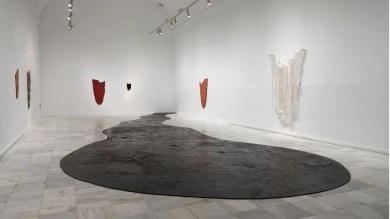
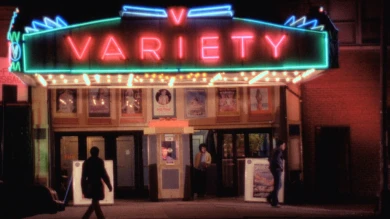
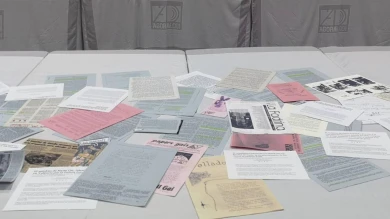
![Miguel Brieva, ilustración de la novela infantil Manuela y los Cakirukos (Reservoir Books, 2022) [izquierda] y Cibeles no conduzcas, 2023 [derecha]. Cortesía del artista](https://recursos.museoreinasofia.es/styles/small_landscape/public/Actividades/ecologias_del_deseo_utopico.jpg.webp)
![Ángel Alonso, Charbon [Carbón], 1964. Museo Reina Sofía](https://recursos.museoreinasofia.es/styles/small_landscape/public/Actividades/perspectivas_ecoambientales.jpg.webp)